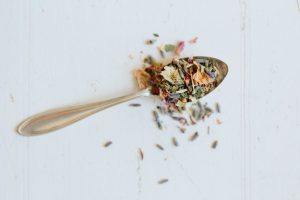The Naturopathic Co.

You're using an outdated browser. Please upgrade your browser to improve your experience.
This role the fascia plays within the body is known as ‘Tensegrity’ (Tension & Integrity) and this not only relates to the intricate connections the fascia, muscles, bones, ligaments & tendons have but also the connection between the Autonomic Nervous System and the Vagus Nerve.
Take a minute to focus inward, can you remember a time when you woke in the morning with a painful ‘knot’ or some serious tension in your neck / shoulders / back or anywhere else that restricted your movement…??
And…
What if we go a little abstract in our thinking and consider this ‘knot’ could be from 1 or more stressful events that have happened in your life?
This role the fascia plays within the body is known as ‘Tensegrity’ (Tension & Integrity) and this not only relates to the intricate connections the fascia, muscles, bones, ligaments & tendons have but also the connection between the Autonomic Nervous System and the Vagus Nerve.
The reason I talk about the nervous system and the vagus nerve is because of its role in regulation of the body. It is imperative to overall mental, emotional, physical & social health & well-being.
The vagus nerve is not just one nerve, it’s a bundle of nerves that has a bio-directional communication system between outside environments & your inside environments; the body, mind, brain connections.
The vagus nerves are cranial nerves and innovate from the brain stem through the facial muscles, both sides of the neck, the larynx, the carotid artery, the heart, lungs, diaphragm and into your digestive system.
Fascia is a form of connective tissue. It’s like a fibrous web that extends into all structures and all systems of the body. We have multiple forms of fascia at different layers through our body. Superficial layers under the skin and deeper layers surrounding the muscles and bones.
Fascia provides a nourishing & lubricating layer around your lungs and intertwines with your pericardium which is the layer of fascia around your heart. It even surrounds your digestive system forming a protective role to allow for sliding and gliding of surrounding tissues over and under these vital organs.
Your fascia is the largest sensory organ in the body with 250 million nerve endings playing a vital role in the transmitting of hormones & neurotransmitters throughout your body. This is why fascia is considered deeply intertwined in the function of your nervous system.
Fascia has a huge role in communicating to your brain about what is happening inside your body.
These fascial tissues are designed to expand and contract, like all muscles, however if we experience physical injury, emotional trauma, or shock, then we can become restricted in movement. If we lose the rhythmic expand & contract nature of the fascia, then this can lead to ongoing ‘knot’ sensations from unresolved stress cycles.
So what else could be impacting fascia to ‘knot’ up and have an impact on your health?
Lack of movement, emotional stress, physical injury and unresolved historical trauma.
If we experience chronic pain, stress and illness, our fascia slowly develops a “fuzz” which is a bit like a thickening that accumulates between tissue layers.
When stress arises we can feel tension not only in our muscles & mind but also our internal organs. Eg. GIT upsets, constipation, shallow breathing, rapid heart beat.
Wonderful tools to maintain the sliding & gliding capacity of healthy fascia is to practice deep breathing, mindful movement, drink lots of water & massage.
Getting curious about how we feel & sense along with getting to know how the vagus nerve & fascia are communicating, is a way to develop our exploratory self knowledge skills which is known as ✨Embodiment✨
Embodiment is the conscious awareness of the felt sense.
So if you often experience a ‘knot’ in your shoulder, neck stiffness or pain anywhere, can you start to explore the sensations that are there and look deeper to sensory healing to uncover why this is occurring.
This article was written by Kate Lister from Mind Body Integration.
Kate has a very special interest in supporting clients who live with chronic physical & emotional pain, chronic stress, anxiety, dis-ease & chronic fatigue.
The essence of Kate’s work comes from a deep fascination for the human body & mind connections. With extensive study and experience in teaching & practising The Pilates Method, Anatomy, Myotherapy, Meditation, Somatic Parts & Somatic Trauma Therapy along with Kate’s own lived experiences, there is no doubt there’s a common thread through Kate’s holistic approach to remembering we are whole and that as humans, finding safety and connection is imperative to healthy lives.
Working in small groups & 1:1 settings, Kate offers insightful and approachable techniques to develop life skills of Regulation & Healing with effective ways to integrate into everyday life. To book with Kate, click here to visit the Mind Body Integration website
Comments are closed.